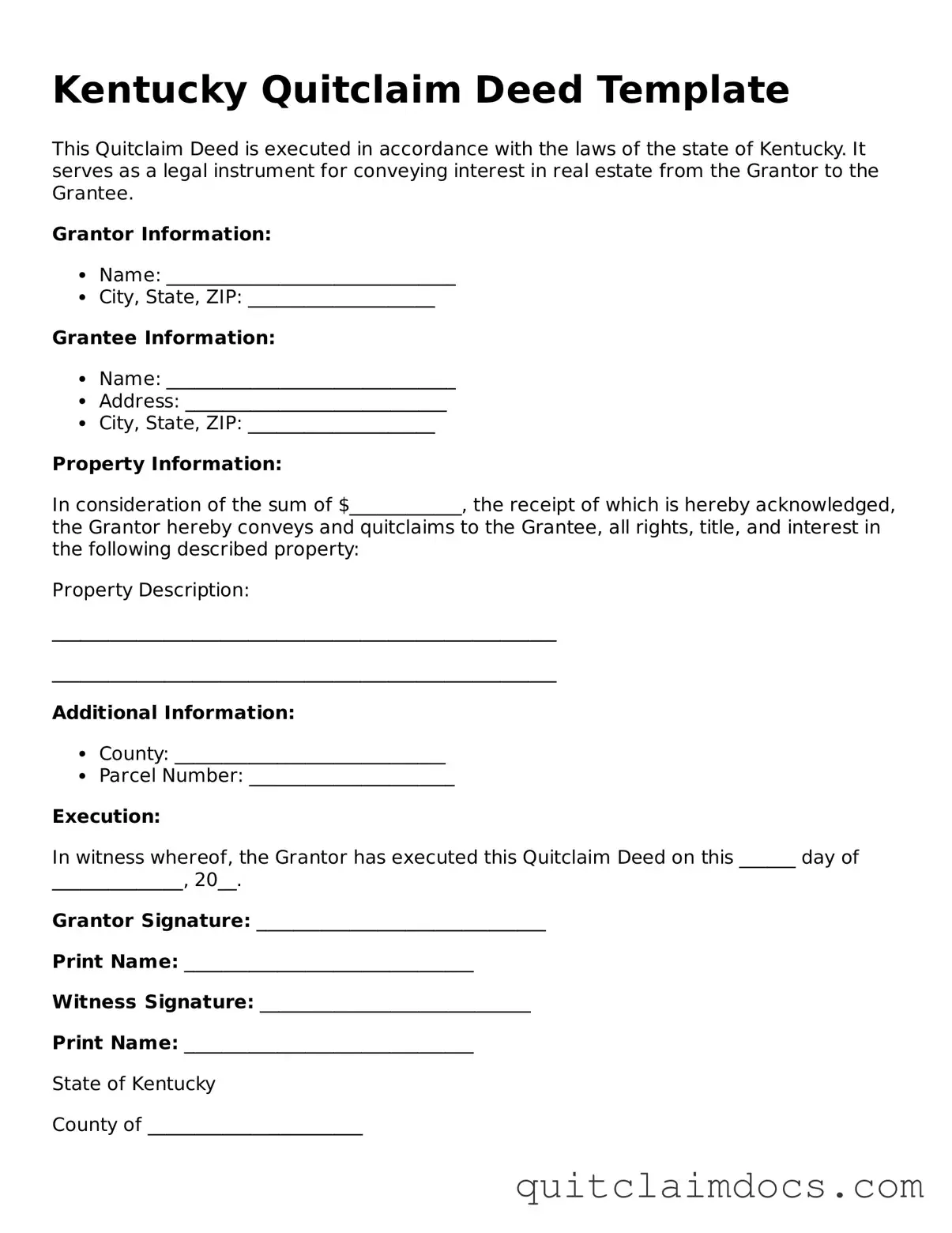Kentucky Quitclaim Deed Template
This Quitclaim Deed is executed in accordance with the laws of the state of Kentucky. It serves as a legal instrument for conveying interest in real estate from the Grantor to the Grantee.
Grantor Information:
- Name: _______________________________
- City, State, ZIP: ____________________
Grantee Information:
- Name: _______________________________
- Address: ____________________________
- City, State, ZIP: ____________________
Property Information:
In consideration of the sum of $____________, the receipt of which is hereby acknowledged, the Grantor hereby conveys and quitclaims to the Grantee, all rights, title, and interest in the following described property:
Property Description:
______________________________________________________
______________________________________________________
Additional Information:
- County: _____________________________
- Parcel Number: ______________________
Execution:
In witness whereof, the Grantor has executed this Quitclaim Deed on this ______ day of ______________, 20__.
Grantor Signature: _______________________________
Print Name: _______________________________
Witness Signature: _____________________________
Print Name: _______________________________
State of Kentucky
County of _______________________
Subscribed, sworn to, and acknowledged before me by the said Grantor on this ______ day of ______________, 20__.
Notary Public: _______________________________
My Commission Expires: _____________
